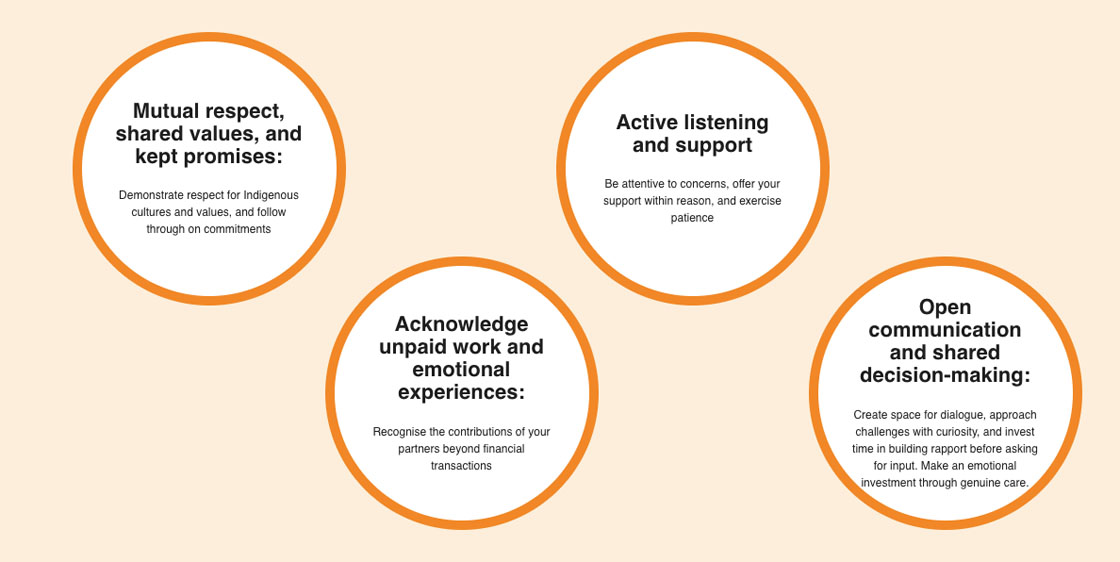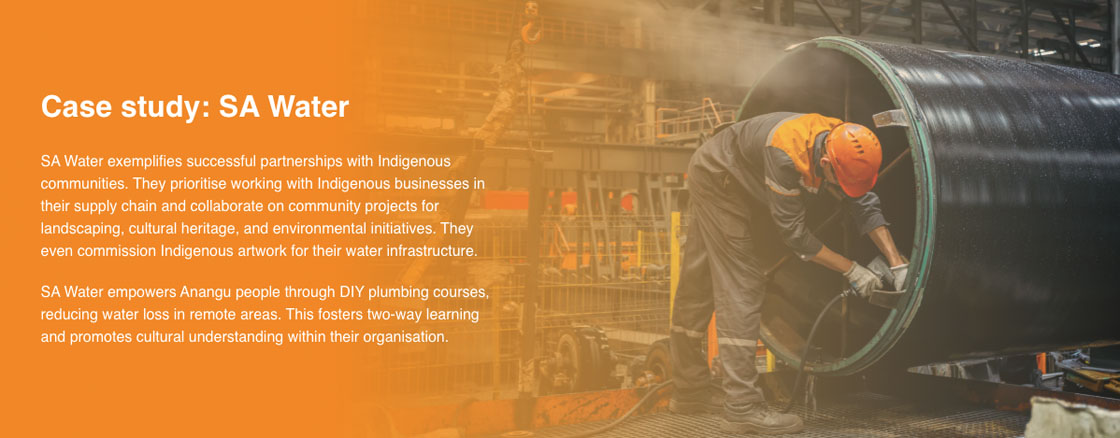Running a business in Australia can mean interacting with Indigenous communities, whether as customers, partners, or stakeholders.
There are also an estimated 16,000 Indigenous-owned businesses, primarily concentrated on the east coast, according to the National Indigenous Australians Agency.
Building strong partnerships allows your business to operate ethically and legally while fostering social impact. Here’s how to engage with First Nations communities respectfully and earn a ’social licence’ that demonstrates your commitment to best practices.
The power of strong partnerships
The Network for Business Sustainability (NBS) emphasises the benefits of collaboration between Western organisations and Indigenous communities. Partnerships can nurture social impact for companies while empowering First Nations people and supporting their goals.
The NBS and researcher Dr Maegan Baker offers these tips:

Key business actions
The Australian Business Guide to Implementing the UN Declaration on the Rights of Indigenous Peoples set outs practical steps to build appropriate frameworks for partnerships.
- Adopt a policy respecting Indigenous rights (standalone or integrated)
- Conduct due diligence to assess and address impacts on Indigenous rights
- Consult with Indigenous peoples on matters affecting them, ensuring you obtain free, prior, and informed consent for projects that impact their rights
- Establish a grievance mechanism for addressing Indigenous people’s concerns, and
- Remediate any adverse impacts on Indigenous rights promptly.
Foundational Approaches for Engaging with Indigenous Australians
The guide also suggests these foundational approaches for engaging with Indigenous Australians:
- Learn about Indigenous culture and history, including land dispossession and trauma
- Engage respectfully, actively listen, and adapt your approaches
- Build trust through ongoing communication and shared decision-making
- Acknowledge power imbalances and create opportunities for participation. This includes:
- Meaningful employment and procurement with Indigenous businesses
- Responding to feedback with a transparent process, and
- Regular opportunities for feedback to drive change.
Innovation and inventiveness have been at the heart of First Nations cultures in Australia for at least 65,000 years. For example, towards the end of the Ice Age, Indigenous people fashioned a multi-function tool, known as thumbnail scrapers, from high-quality chert, or crystal for butchering, or scraping wood, bone, and skin. As well, their pre-industrial trading networks were expansive, often celebrating symbolic and scared objects. Trade routes incorporated Songlines and Dreaming narratives, too.

Your Next Step
Whether your business interacts with Indigenous communities as customers, business partners or stakeholders, the approaches above are sound. The insights you’ll develop can positively impact your business in various ways:
- Building trust and strong relationships
- Enhanced cultural competency
- Increased innovation and creativity (tapping into unique knowledge, perspectives, and problem-solving perspectives)
- Expanded market reach
- Improved social responsibility, and brand reputation, and
- Learning from Indigenous wisdom (accumulated over generations, particularly in sustainable resource management, community governance and holistic wellbeing).
These benefits can also contribute to stronger risk management practices. And that’s why we’re here to help your business succeed. Ensure you keep us updated as your grow.


